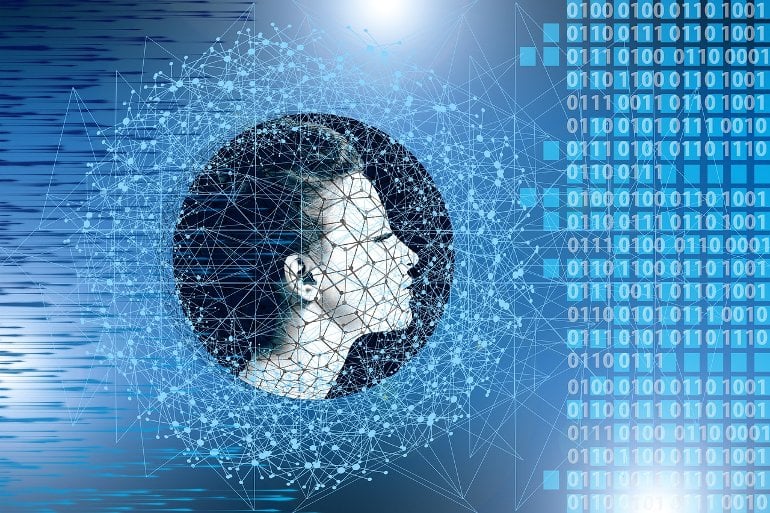Summary: A new theory suggests glial cells, specifically astrocytes, play a key role in cognitive processing.
Source: University Health Network
A team of scientists from the Krembil Brain Institute, part of the University Health Network in Toronto, and Duke University in Durham, North Carolina, has developed the first computer model predicting the role of cortical glial cells in cognition.
The paper was published today in the prestigious journal Proceedings of the National Academy of Sciences (PNAS).
“The role of neurons is well documented, but neurons are interspersed with glial cells and many synapses in the brain have glia nearby,” says Dr. Maurizio De Pittà, a scientist at the Krembil Brain Institute and the first author of the study. “We currently do not understand how neurons and glia work together, or how glial dysfunction contributes to cognitive deficits.”
Glial cells are abundant throughout the brain and play several important roles. These cells have long been thought to be passive bystanders—physically supporting neurons and synapses, bringing nutrients to neurons, and removing toxins and waste products. However, scientists have recently discovered that glia interact with neurons in a fashion similar to the way that neurons communicate with one another through chemical signals.
This paper presents the first theory of the role glia play in cognitive processing, in the brain. “The type of glial cells that we study—known as astrocytes—can modify the activity of our brain circuits and influence the way we behave,” says Dr. De Pittà.
The study looked at the role of astrocytes in working memory, which is the ability to store information for ongoing tasks, such as following the storyline of a movie or counting to ten.
“We know that astrocytes release specialized chemical signals and we have shown that this signalling could mediate different readouts of working memory,” says Dr. De Pittà.
“Revealing that chemical interactions between neurons and astrocytes could be at the core of working memory, also tells us what could go wrong when we have working memory deficits, which are often warning signs of major brain disorders.”
He adds, “If we want to truly understand dysfunction in working memory, we need to consider the interaction between glial cells and neurons.”
Also noted in the article:
• Like radio systems, synapses have been traditionally thought to transmit on a single frequency band. Taking astrocytes into account, we now know there can be multiple frequency bands.
• It is generally believed that different forms of working memory rely on a variety of circuits; however, this study shows that the same neuron-glial circuits could encode for various forms of working memory.
• The way that astrocytes are arranged with respect to neurons could control our working memory capacity, or how many things we can keep in mind simultaneously.
Currently, there are no effective techniques to record glial activity in the human brain. The researchers hope to eventually create a high-fidelity model—a ‘digital twin’—of the brain’s neuron-glia circuits, from genes to cells.

Such a model can help to uncover markers of neuron-glial interactions and improve the diagnosis and treatment of various brain diseases, such as Alzheimer’s, Parkinson’s and epilepsy.
“With our new theory, we are not just looking at the brain in black and white—that is, whether given neuron populations are active or inactive. Rather, we are viewing the brain in technicolour, gaining a deeper understanding of cellular communication by including glia and their signalling,” says Dr. De Pittà.
“This gives us a much more comprehensive and realistic picture of the complexity of the brain.”
As technology advances, De Pittà and his team at the Krembil will use their models to develop techniques to modify neuron-glial circuit activity to treat disease. “Our ultimate goal is to study neuron-glial interactions to uncover new therapeutic targets for brain disorders.”
Funding: This work was funded by an FP7 Marie Skłodowska-Curie International Outgoing Fellowship. Research at Dr. De Pittà’s lab is supported by operating grants from the Krembil Research Institute, the European Research Commission, the Krembil Foundation and UHN Foundation.
About this cognitive processing research news
Author: Ana Fernandes
Source: University Health Network
Contact: Ana Fernandes – University Health Network
Image: The image is in the public domain
Original Research: Closed access.
“Multiple forms of working memory emerge from synapse–astrocyte interactions in a neuron–glia network model” by Maurizio De Pittà et al. PNAS
Abstract
Multiple forms of working memory emerge from synapse–astrocyte interactions in a neuron–glia network model
Persistent activity in populations of neurons, time-varying activity across a neural population, or activity-silent mechanisms carried out by hidden internal states of the neural population have been proposed as different mechanisms of working memory (WM).
Whether these mechanisms could be mutually exclusive or occur in the same neuronal circuit remains, however, elusive, and so do their biophysical underpinnings.
While WM is traditionally regarded to depend purely on neuronal mechanisms, cortical networks also include astrocytes that can modulate neural activity.
We propose and investigate a network model that includes both neurons and glia and show that glia–synapse interactions can lead to multiple stable states of synaptic transmission.
Depending on parameters, these interactions can lead in turn to distinct patterns of network activity that can serve as substrates for WM.






